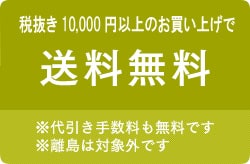Congress has recognized that for many, the ability to access retirement savings is a necessary lifeline to survive the pandemic financially. Under the CARES Act, early withdrawals made in 2020 due to COVID-19 related difficulties are not subject to the additional 10% tax under Section 72(t) or the additional 25% tax on SIMPLE IRAs under Section 72(t)(6) if certain conditions are met. It is also important to note that a qualified person may decide to manage regular payments and distributions that would have been required without section 2203 of the CARES Act and any distribution received as a beneficiary of an eligible pension plan on or after January 1, 2020 and before December 31, 2020. such as COVID-19, which will receive preferential tax treatment for these withdrawals. A person is usually allowed to take out a loan from a 401(k) plan up to 50% of the account balance acquired or up to $50,000, whichever is lower if the plan allows. The CARES Act adjusted these limits to 100% of the balance earned or up to a maximum of $100,000, whichever is lower. Loans typically must be repaid within five years, and the CARES Act extends this period by one year for loan payments due between March 27, 2020 and December 31, 2020. This means that any payment due between these dates can be delayed for up to one year and recapitalized over a period of one year longer than the original term of the loan. This can help taxpayers who already have an outstanding loan of their 401(k) due to previous difficult cases by providing for a deferral of repayment and reducing the amounts of payments required by repaying the loan over an extended period of time. This blog was originally published on May 27, 2020 and updated on June 30, 2020. No matter how much you can access, you should know that withdrawing money from a retirement account is not as easy as transferring money from a savings account to a checking account.
The process could take several weeks. If you need money for something critical, give yourself at least a two-week stamp in case the paperwork is delayed or lost. Many businesses struggle to provide customer support over the phone or online, and their ability to process transactions may also be limited. Talk to your plan provider or administrator about the steps and ask for a schedule estimate. For more information on the CareS Act rules for COVID-19-related distributions and loans, see Announcement 2020-50 and IRS Press Release IR-2020-124. In view of the above concerns, it may still be advisable to use the provisions of Section 2202 of the CARES Act. Whatever the possible consequences, it may be useful to make an early withdrawal to meet basic needs, maintain housing or avoid high-interest debt. When a withdrawal is made, it is advisable to minimize the amount and take only what is absolutely necessary, with the intention of making a refund within three years – and the sooner the better. In recognition of the ongoing economic impact of the COVID-19 pandemic, the IRS has provided procedures that allow individuals to make advance payments from certain pension plans under Section 2202 of the Coronavirus Aid, Relief, and Economic Security (CARES) Act, P.L.
116-136. This provision is intended to ease the burden on taxpayers who may need access to additional funds in these unprecedented times. Communication 2020-50, published in June, clarifies the procedures for deducting eligible funds and provides guidance on the different tax reporting options related to these transactions. From a financial perspective, it`s usually best for a person to exhaust all other assets before diving into retirement savings. While it`s easy to take money from a retirement account, it`s very difficult to replace money at an equivalent value. A university professor once advised the author and her classmates to maximize pension contributions after graduation, to the point that they maintain the same financial standard of living in their 20s and 30s that they normalized at university. Although this is an extreme example, the principle of creating wealth through aggressive savings for retirement can be a very successful strategy. By withdrawing prematurely, the person loses not only the current value of the payment, but also its future value, which can be very important when a person is young and has many years of compound and fiscally advantageous growth. Among other things, the CARES Act eliminates the 10% prepayment penalty if you are under the age of 59 and a half. One-third of the money you withdraw will be included as income in your taxes for each of the next three years, unless you choose otherwise.
The CARES Act also allows you to refund what you have withdrawn from your accounts if you can. Regardless of your age, you will need to fill out a Form 1040 and view the IRA payment amount. Since you made the withdrawal before you reached the age of 59 1/2, unless you complied with one of the exemptions, you will have to pay an additional 10% tax on advance distributions on your Form 1040. You may need to complete a Form 5329, Additional Taxes on Eligible Plans (including IRAs) and other tax-efficient accounts IN PDF format and attach it to your tax return. Some distributions of Roth IRA are not taxable. With a traditional IRA, rollover, SEP or SIMPLE, you make pre-tax contributions (if your income is below a certain level and certain other qualifications) and don`t pay taxes until you withdraw money. IRA withdrawal rules and penalty details vary by age. If you are unemployed and need income, you may be considering withdrawing from your retirement savings. If you withdraw money from traditional individual retirement accounts (IRAs) and employer-provided accounts before you reach the age of 59/2, you usually have to pay a 10% prepayment penalty.
If the pandemic has negatively impacted your finances, temporary changes to the rules of the CARES Act may give you more flexibility to make an emergency deduction from tax-deferred retirement accounts in 2020. Please note that this blog covers pension plan payments – not retirement loans. You may want to spend some time balancing the risks and benefits of withdrawing money versus taking out a loan. Learn more about taking out a loan from your retirement accounts. You may be withdrawing from a fund that lost value during the COVID-19 pandemic. When you withdraw money from an investment portfolio in a “low” market, you limit its ability to grow and regain its value as the market recovers. A payment of $100,000 today at a growth rate of 5% would increase to about $160,000 in 10 years without additional contributions. No, the additional 10% tax on advance payments from eligible pension plans does not count as a penalty for the savings deduction.
An eligible person can choose from the inclusion of the three-year ratifiable income and instead include the total amount in the year of withdrawal. This election must be made before the date of filing the income tax return and cannot be changed thereafter. In addition, all distributions related to COVID-19 must be treated consistently, either all those that were fully reported during the withdrawn taxation year, or all those that were ratified over a three-year period. This requires planning on the part of the person`s CPA to determine the most taxable strategy for the time of income. Once you`re 72, you`ll need to start taking minimum required annual distributions (MSY) from your traditional IRA. Your first MSY must be taken no later than April 1 of the year following the year in which you turn 72. Every year after that, you must be up to 31 years old. December take an RMD.. .













